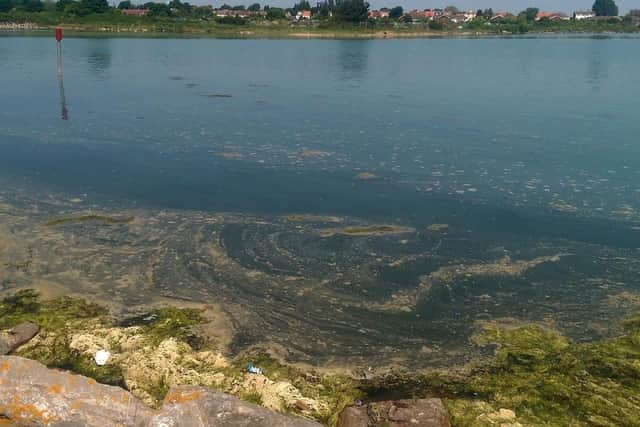Hampshire thunderstorms could lead to more Southern Water discharges into Solent waters
and live on Freeview channel 276
That is the message from Southern Water amid a week of constant storms, with heavy rain forecast by the Met Office from now until the end of Thursday.
During periods of intense rainfall, Hampshire's sewer network can become overwhelmed by rainwater, forcing Southern Water to release the excess water back into the ocean.
Advertisement
Hide AdAdvertisement
Hide Ad

Southern Water has come under heavy criticism for the volume of waste it releases, with Environment Agency figures showing that raw sewage has been pumped into the region every 43 minutes on average over the past five years.
The firm insists the discharges from heavy rainfall are 'heavily diluted'.
A spokeswoman for Southern Water said: 'Rain can overwhelm the combined sewer and drainage system which exists in many parts of our region.
'To protect homes, schools and businesses from flooding, storm overflows act as a release value and release excess water into the sea.
Advertisement
Hide AdAdvertisement
Hide Ad'These discharges are heavily diluted, typically being 95 per cent rainwater. There are around 15,000 storm overflows in England and approximately 1,000 in our region.'
According to Southern Water, the heavy rainfall collects unflushable items in the sewage network and flushes it to the pumping stations.
This causes blockages, clogging up the network and opening the storm overflows.
The water company is investing £2bn between 2020 and 2025, with the majority of the money going towards improving wastewater assets and environmental performance.
Advertisement
Hide AdAdvertisement
Hide AdA task force has also been set up to 'significantly' reduce overflows by 2030, and a service called Beachbuoy allows residents to see when discharges are taking place - and where.
Conservative former minister MP Steve Brine said national targets on reducing sewage overflows to be met by 2035 are ‘just too long’ for many of his constituents.
The MP for Winchester said: ‘What we need here in this whole debate is some cool, some balance, and deal in the facts. There has been some deeply grubby, irresponsible scaremongering over this summer from some of the usual suspects.
‘So, in the spirit of honesty and truth, 2035, which I appreciate is a long way away, is just too long for many of my constituents.’
Advertisement
Hide AdAdvertisement
Hide AdHe asked what the choices are that he and bill payers would face ‘to speed things up significantly’.
Environment Secretary George Eustice said: ‘It’s not the case that nothing will be done until 2035. Indeed, investments are happening right now to improve over 800 priority storm overflows.
‘We will see a reduction in discharges across the country of around 25 per cent by 2025 and then we will continue and go further out until 2035.
‘But the estimated average increase in water bills for the actions, the £56bn package that we set out to 2030, will be in the region of £12 per year, were we to go further it would be around 10 times higher than that every year.’
Advertisement
Hide AdAdvertisement
Hide AdSouthern Water's hosepipe ban is still in place for all fresh water customers in Hampshire and the Isle of Wight.
Those households that are supplied by Portsmouth Water have not been affected by this.
Since the storms hit at the start of the week, no burst pipes have yet been reported in Hampshire.

